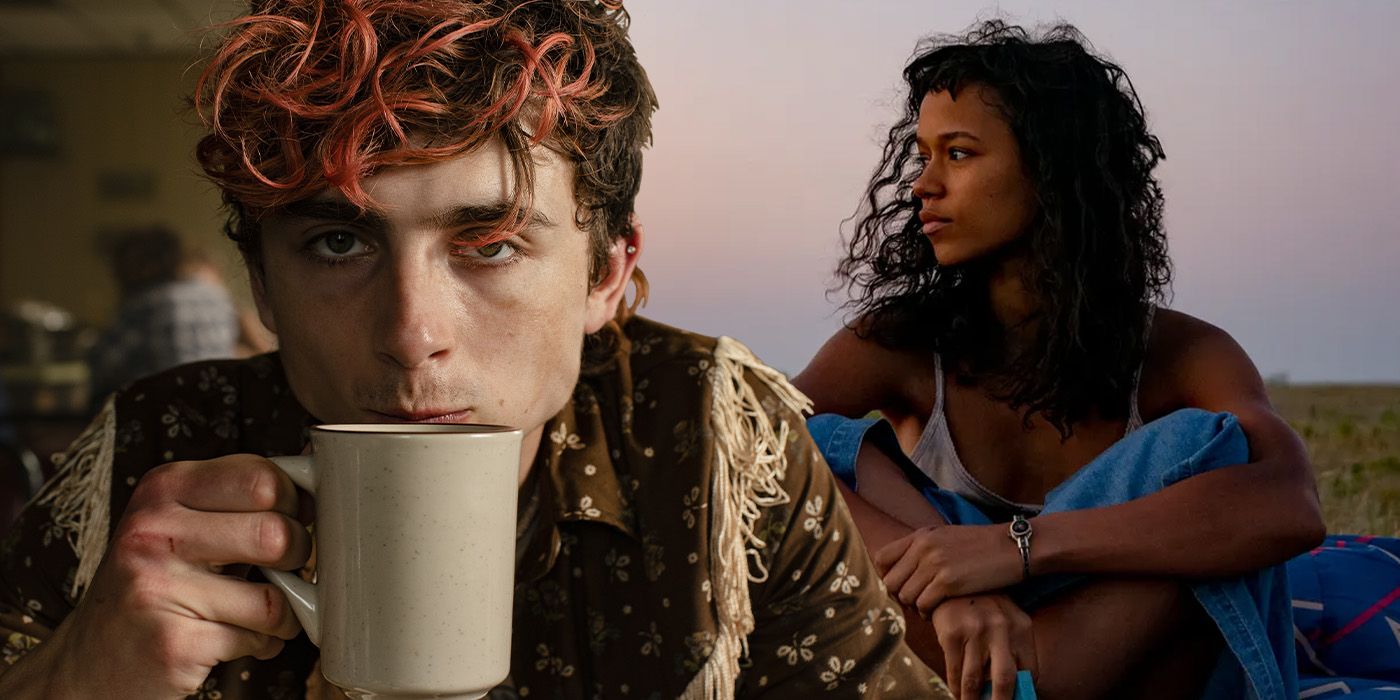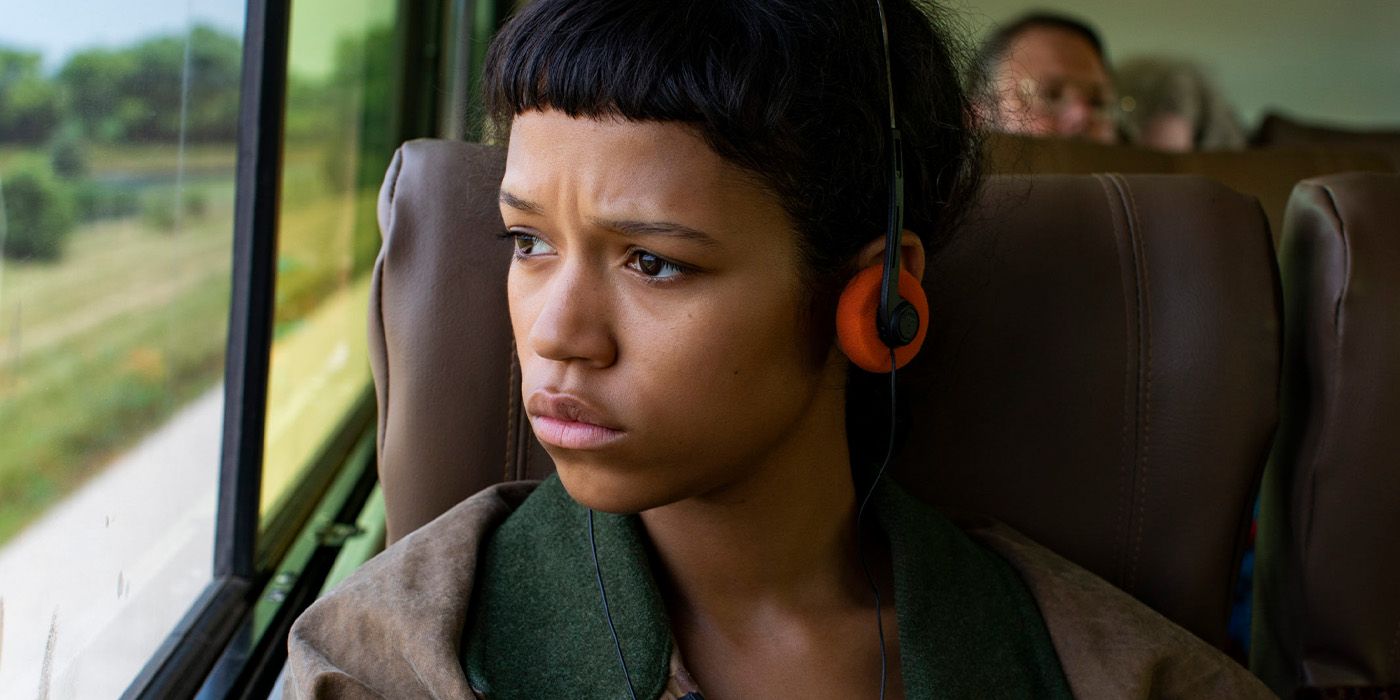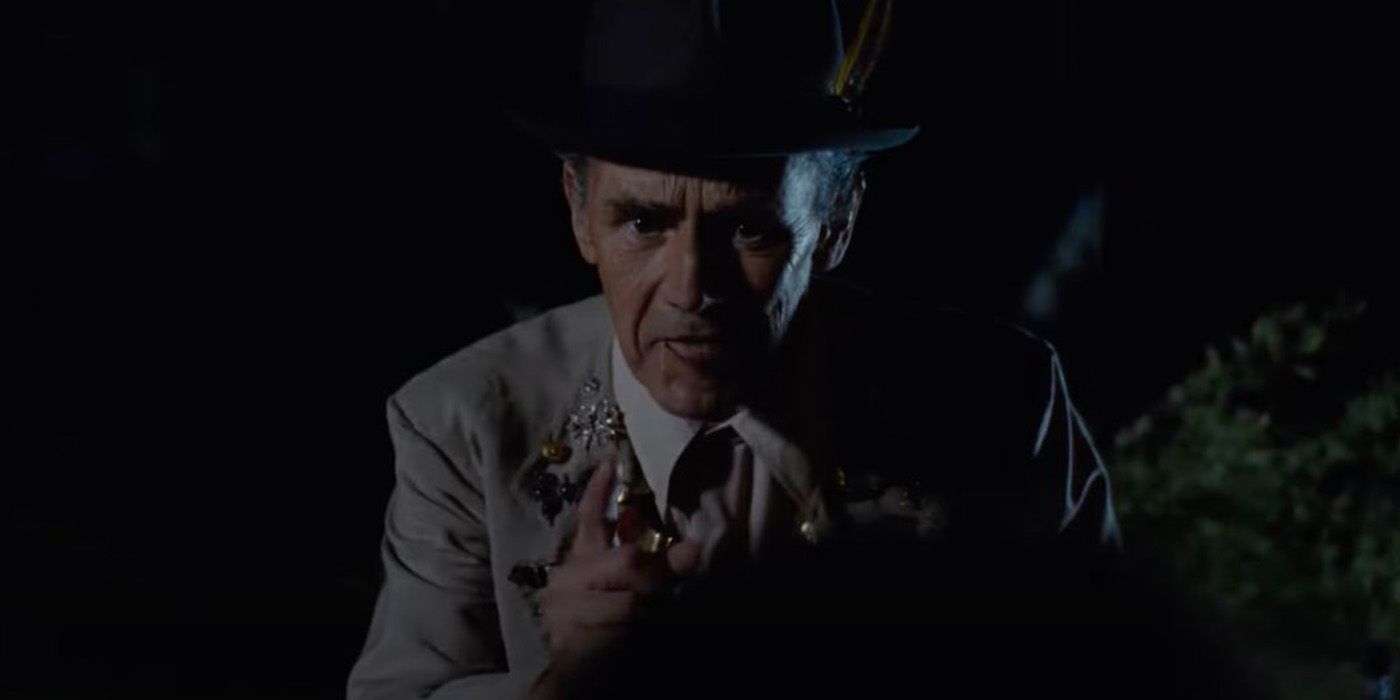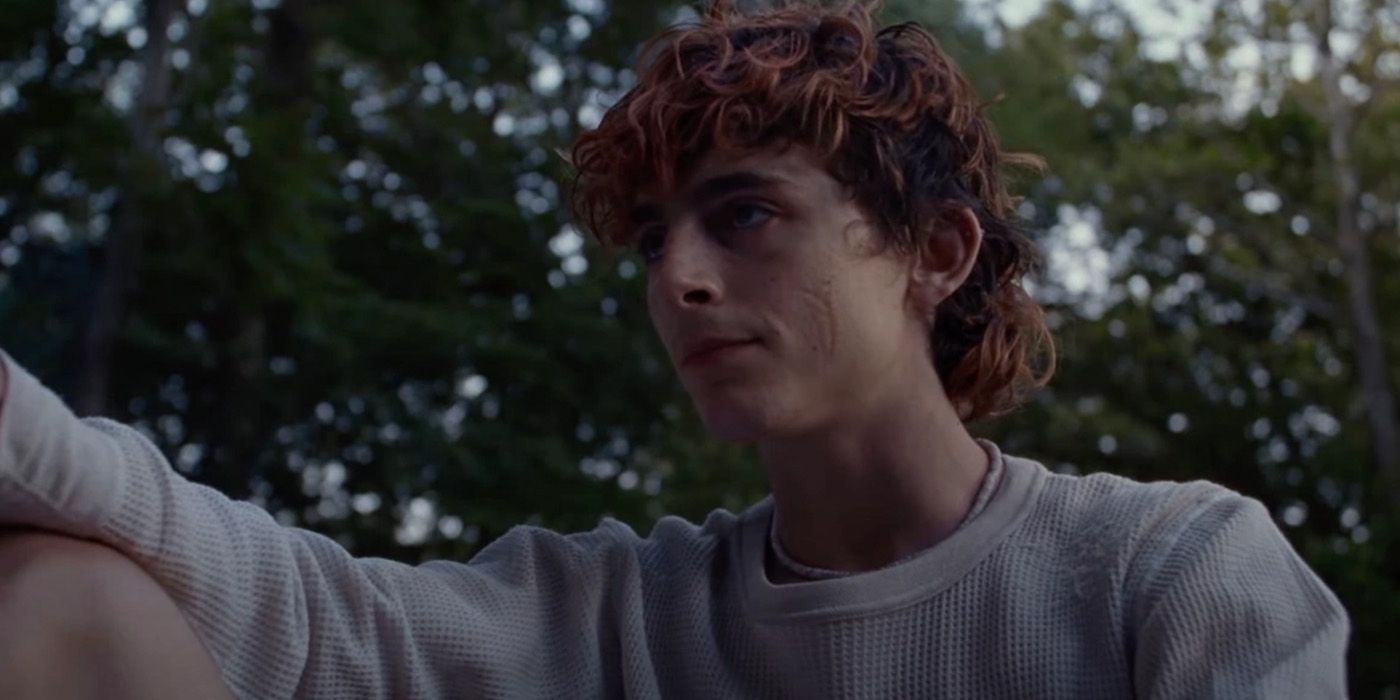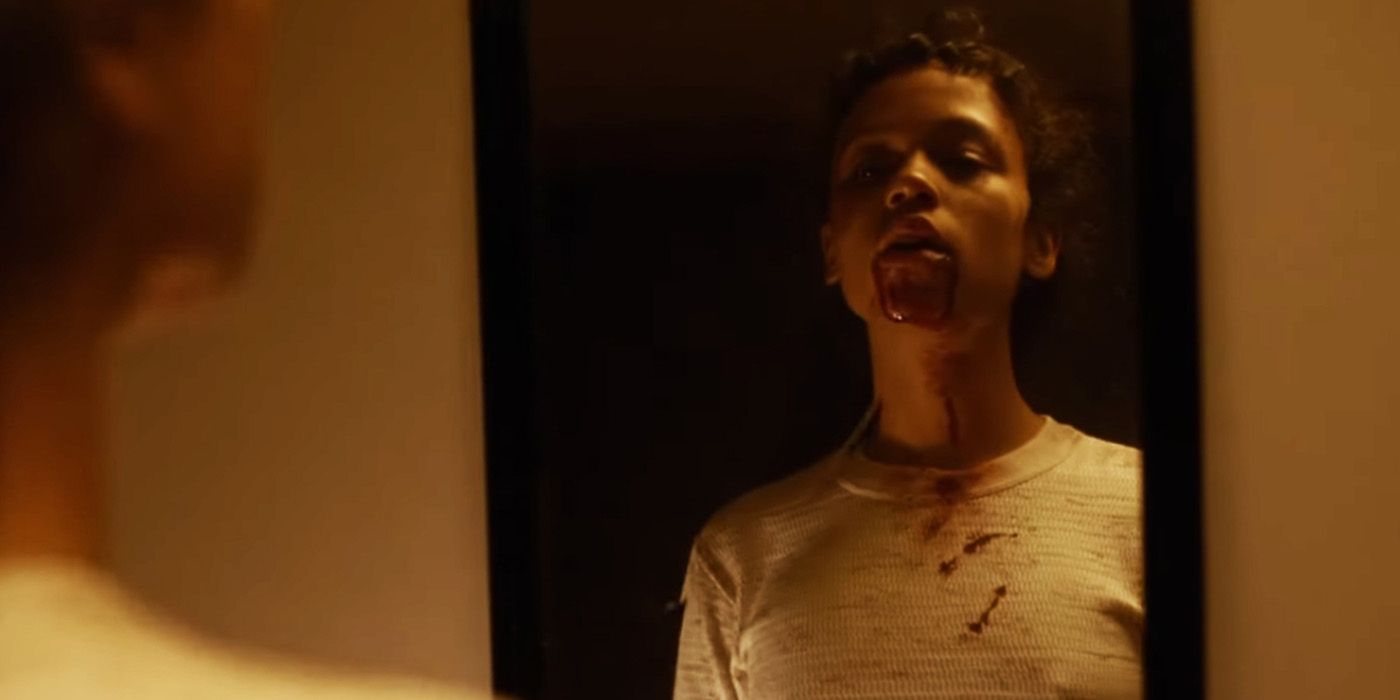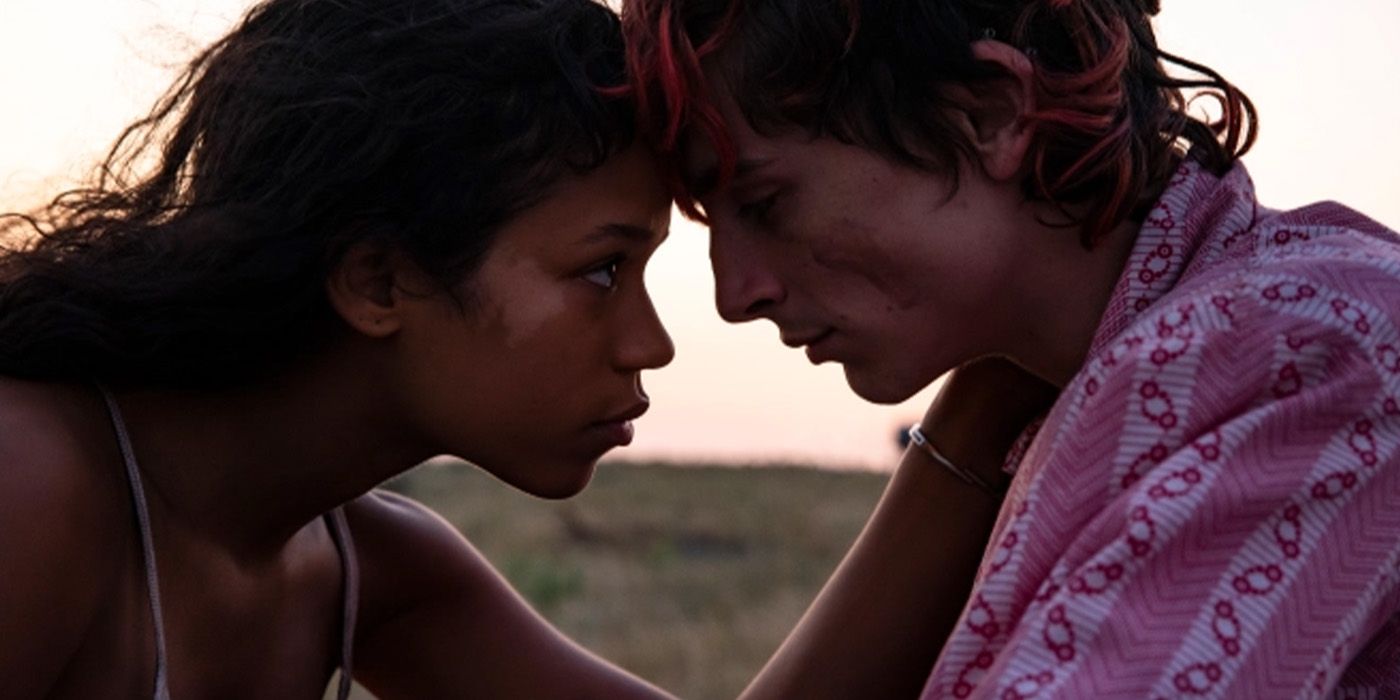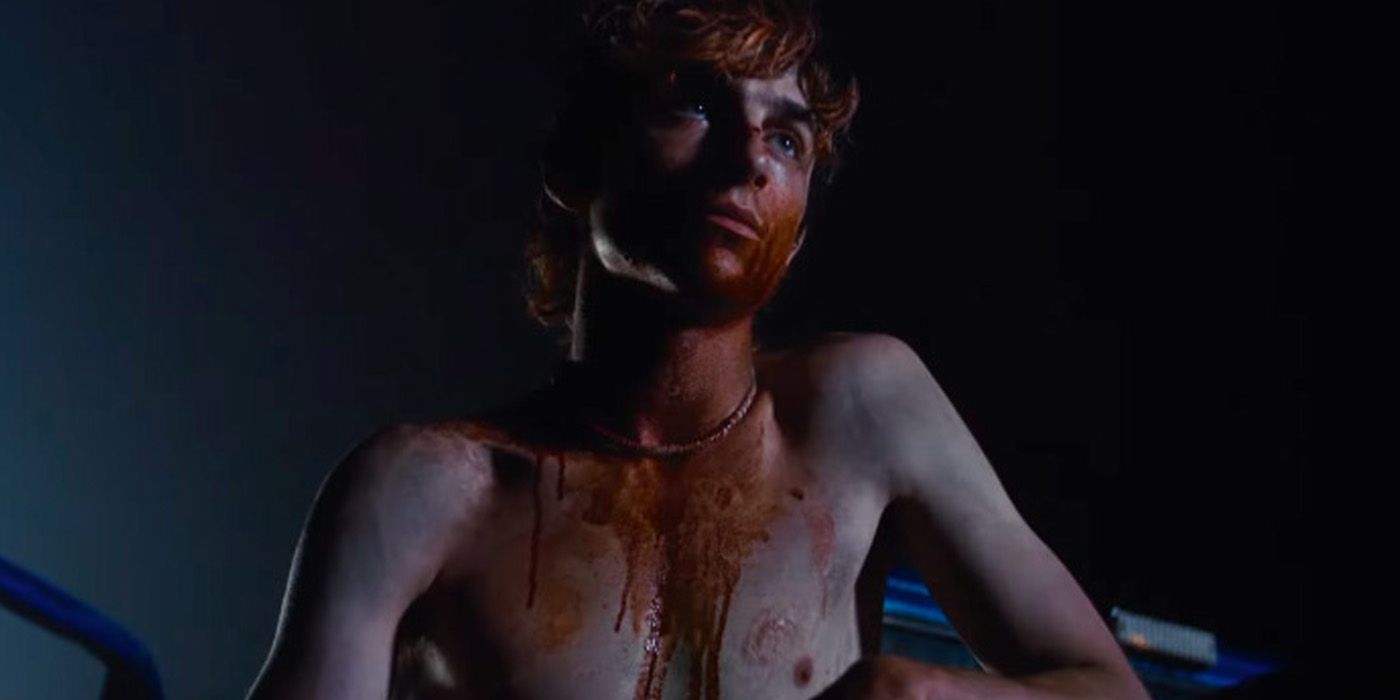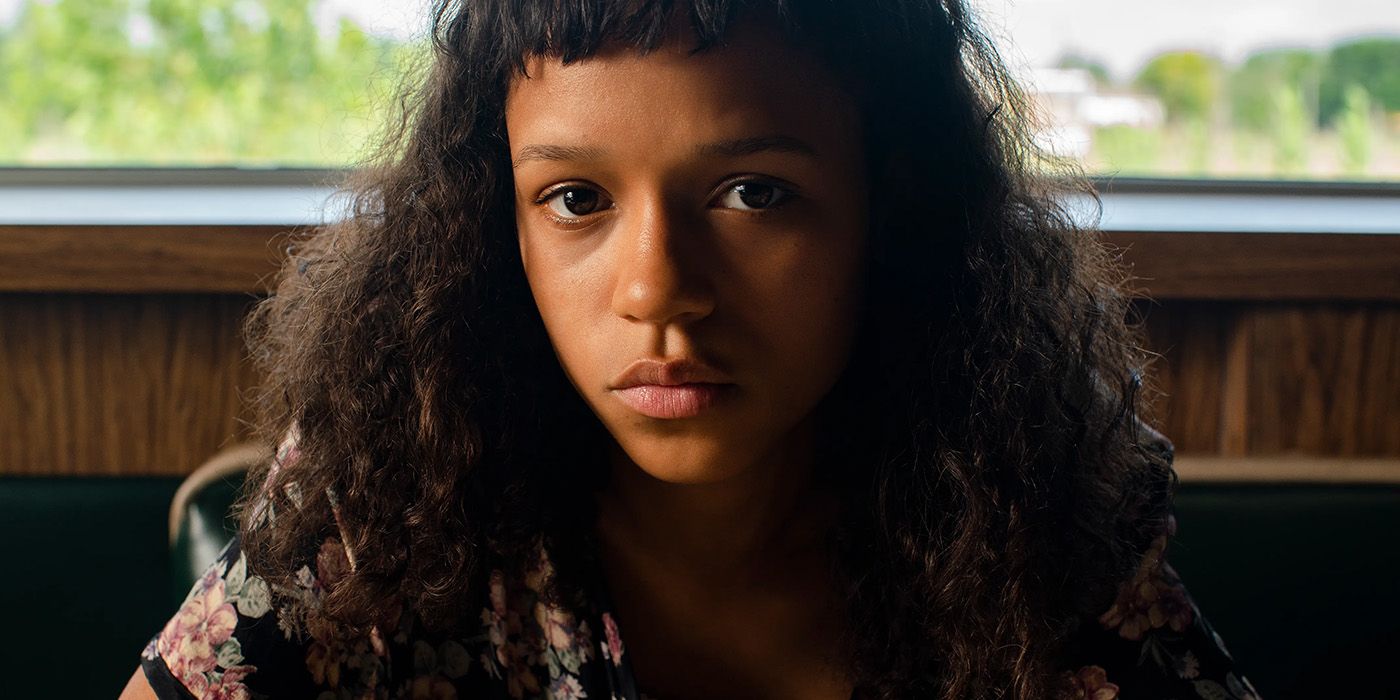Based on the 2015 novel of the same name by Camille DeAngelis, Bones and All is the latest film from Luca Guadagnino, a coming-of-age story with a difference that stays mostly true to the original source material, but makes several major changes. Taylor Russell of Lost in Space fame portrays Maren Yearly, a young compulsive cannibal who sets out on a road trip to find her mother who abandoned her years prior. Along the way, she meets several people just like her, including Mark Rylance's sinister Sully, and Timothée Chalamet's intriguing Lee, marking the actor's second collaboration with Guadagnino after 2017's Call Me By Your Name – another adaptation.
While Guadagnino's film follows the same principal story to DeAngelis' novel, some major changes are made that make Bones and All a more thrilling and concise film. In both the film and the book, Maren must come to terms with her demons, and uses supporting characters to inform her personal growth as she uncovers the mysteries of her monstrous condition. However, characters, relationships, and even the construct of the cannibalism itself is altered for the film adaptation of Bones and All, arguably creating a simpler story that allowed Guadagnino to focus on the coming-of-age, romance aspects of the plot. Here are Bones and All's biggest differences from the book explained.
Maren's Family Dynamic Was Different In The Book
In the opening moments of Bones and All, it's revealed that Maren is currently living with her father, André Holland's Frank, though the pair have had to uproot their lives and move across country several times as Maren can't control her primal, cannibalistic urges. Shortly after Maren's 18th birthday, Frank abandons his daughter, leaving her with some cash and her birth certificate which reveals to her the birthplace of her absent mother. This action kickstarts her journey to find her mother and answer the pressing questions about her condition, though in DeAngelis' novel, the roles were switched.
In the original Bones and All book, Maren spent her childhood with her mother, who abandons her similarly to her father in the film, though this happens when Maren reaches the age of 16. This prompts her to begin her road trip to track down her father and find out more about her condition. It's not explained why this change occurred, though the impact of Maren's father leaving her alone during the night was massive, and made the eventual reunion between her and her mother, Janelle, played by Chloë Sevigny, was a heart-breaking and powerful moment, only made more intense by Janelle's attempt on her daughter's life.
Sully And Maren Shared A Different Connection
On her journey to Minnesota to find her mother, Maren meets several other cannibals, named "eaters" in Bones and All. The first of these characters is the creepy and eccentric Sully, who Maren comes into contact with during a layover in Columbus, Ohio. Sully uncovers some details about their shared condition, such as the fact that eaters can sense other eaters through scent, which is how Sully found Maren, and that Maren will need to feed more and more the older she gets, as the act of devouring human flesh will become necessary to live. After feeding together, Maren leaves Sully behind, though he subsequently stalks her across the country, unbeknownst to her.
While their connection is very different from what was portrayed in the film adaptation, Maren and Sully do cross paths in the book. In the film, he is shown to be something of a mentor, but also an antagonistic figure towards Maren, and eventually Lee, however, in the book, Sully is actually revealed to be Maren's grandfather. Though this detail was completely omitted from the film, it could have explained why Sully felt such a strong connection to Maren and felt obliged to follow her cross-country. Much of the interactions between Sully and Maren remained much the same, though this familial connection could have fleshed out the story even further.
Lee's Backstory Was Changed For The Film
While in Indiana, Maren meets Lee, who reveals himself to also be an eater. The pair bond over their shared experiences, such as the fact that both of their "first times" was eating their babysitters, but it's a while before Lee fully opens up about his family history. After Chalamet's performances in several other coming-of-age stories, including Call Me By Your Name and Lady Bird, he's gifted at bringing the tender moments, which comes in Bones and All when he reveals that his father was abusive towards him and his family, was an eater himself, and that Lee had killed and eaten him.
Lee's backstory was changed significantly for the film adaptation, however, as Lee's father is barely mentioned at all and is certainly not killed and eaten by Lee. Instead, the reader's attention is drawn more to the strained relationship between Lee, his mother, and his sister, the latter of which is portrayed by Anna Cobb in Bones and All. Lee is shown to have a difficult relationship with his family in the film adaptation, but this has nothing to do with his cannibalism like it does in the book, it's simply because people in the community blamed Lee for his father's disappearance, not knowing the true extent of his involvement.
The Role Of Cannibalism Is One Major Change
In DeAngelis' novel, cannibalism shares a powerful connection to Maren's feelings of love and intimacy. This means that she can control her urges most of the time, but if someone gets emotionally close to her, such as a babysitter, or she feels attracted to someone, such as a camp crush, she feels the unbearable desire to eat them. This differs greatly to what was shown during Guadagnino's film adaptation, as Maren's cannibalism during Bones and All has no connection to her being attracted to someone or feeling an emotional connection with them, instead, it acts as a very different metaphor.
While the film adaptation of Bones and All confirms that the cannibalism is a compulsive hunger that is shared by all eaters, and is implied to have a genetic component as both Maren's mother and Lee's father were eaters, the horrific subject matter could also be seen as a metaphor for queerness. Both Maren and Lee are suggested or shown to be sexually fluid, an idea which is brought to the forefront due to the 1980s setting of the film. Homophobia and the AIDS crisis had begun to spread at the time, which is mirrored in Maren's self-loathing as an eater, a thought shared by many in the queer community.
Maren And Lee Had A Very Different Ending
Guadagnino's film focuses primarily on the blossoming love story between Maren and Timothée Chalamet's Lee, with the pair connected almost instantly and quickly entering into a physical relationship. Their connection is palpable, making Bones and All a romance film first and foremost. Towards the end of the film, Maren and Lee decide to suppress their cannibalistic urges and try and live like normal people "for a while." This works for several months until the return of Sully interrupts their peaceful life in Michigan, causing their inner cannibals to come out once again as Lee is fatally stabbed and begs Maren to eat him "bones and all" as a display of true love.
This is perhaps the most significant change from the novel, as Maren and Lee have an undeniable connection, but don't find themselves in a physical relationship for the majority of the story. This changes at the very end of the book, which sees Lee make physical advances on Maren, but since her cannibalism is tied directly to her feelings of attractiveness and intimacy, this causes her darkness to surface, and she consequently eats Lee without his asking. Though still gruesome and difficult to watch, the ending of the film adaptation of Bones and All is more romantic than the ending of the novel.
Eaters Devour Every Part Of Their Victim In The Book
In the Bones and All film, the actual concept of eating someone "bones and all" is a seemingly outrageous idea posed by Jake and Brad, two experienced cannibals who cross paths with Maren and Lee at a swimming hole in Indiana. This idea only arises properly at the end of the film, while Lee begs Maren to eat him, bones and all, as a way to ensure that Lee will always be with Maren even after he's gone. This is bookmarked beautifully by a glimpse of Maren and Lee sitting together in the field, symbolizing that they'll never be apart as Maren had devoured him entirely.
Whereas the idea of eating someone's bones and all is rarely mentioned in the Luca Guadagnino film, in the novel, eaters always eat their victims bones and all, not leaving any scraps behind. This works in the novel as it plays as more of a fantasy, fairy tale story which makes the idea of eating someone completely, including their bones, a more believable prospect than what could be seen on screen. This also helps to make the mentions of cannibalism in the book more gruesome, as DeAngelis tends to skip over scenes of the actual eating, focusing more on the yearning before the act and the emotional impact in the aftermath.
The Book Reveals Maren's Life After Lee
While the film adaptation of Bones and All ends with Maren devouring Lee, it doesn't touch on what happens to the now-lone cannibal after this grisly act, aside from showing a glimpse of Maren and Lee seemingly staying together forever after she eats him, bones and all. The novel, however, features scenes after Maren eats her partner in crime, showing how she has attempted to live a normal life, but seems to have accepted her cannibalistic urges as she makes a meal out of another man who made sexual advances towards her. A scene similar to this was filmed for Guadagnino's adaptation, but was eventually cut.
Despite Maren's life after Bones and All remaining a mystery for filmgoers, the fact that this scene was filmed implies that she follows a similar trajectory to her book counterpart. Both the ending of the book and of the film imply that Russell's Maren (who also starred in horror movie sequel Escape Room: Tournament of Champions) has evolved significantly as a person, and has come to terms with her demons, now being able to balance her normal life and her life as an eater. The choice to cut this scene from the end of Bones and All helped to highlight that the film adaptation was more focused on the love story between Maren and Lee, rather than the act of cannibalism itself.

